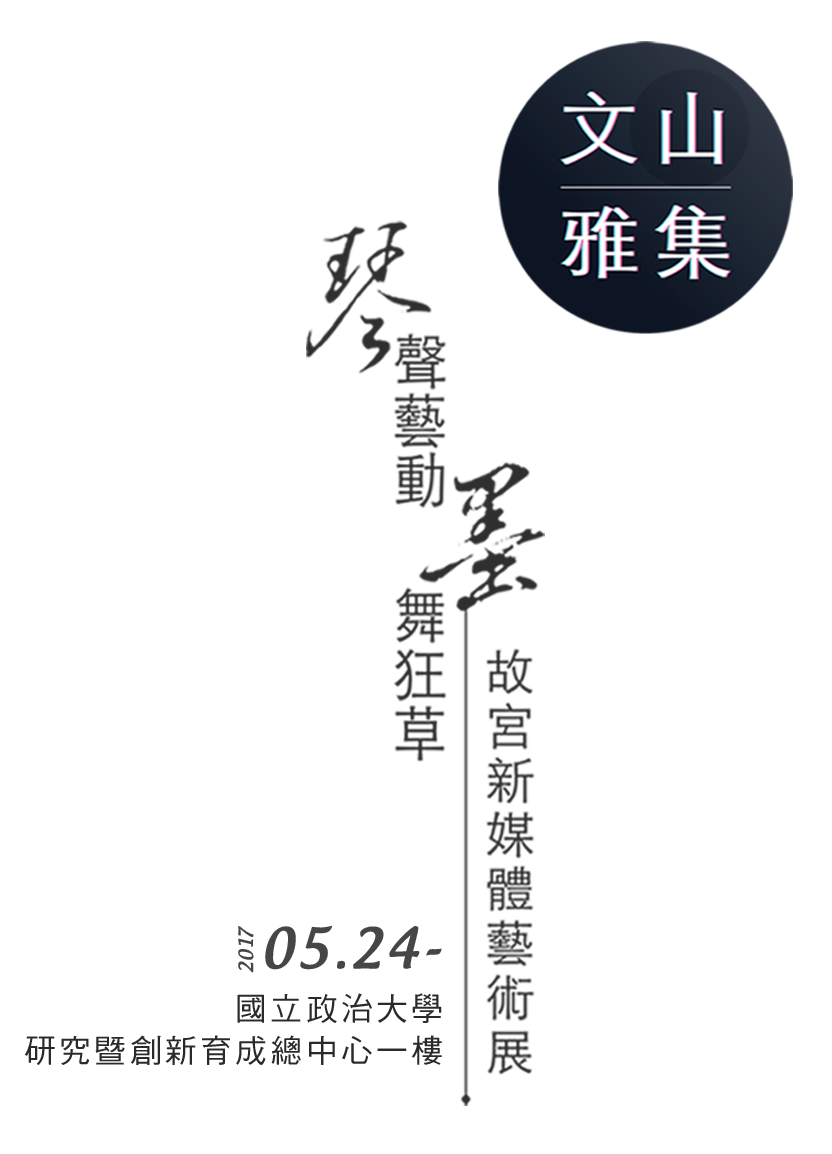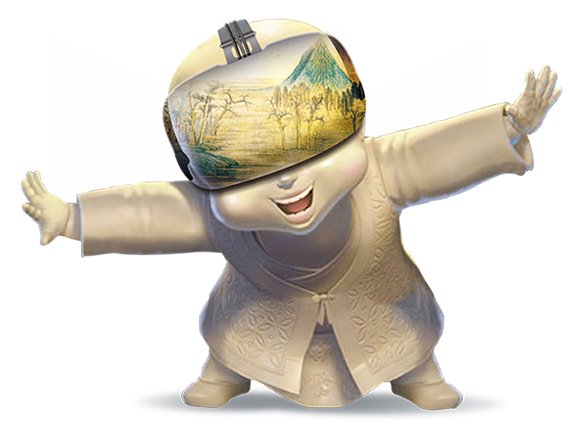In the recent ten years, the National Palace Museum (NPM) has cultivated its digital realm and enriched its content using resources from the digital humanities. A Literary Gathering at Wenshan is the result of a special collaboration between National Chengchi University and the National Palace Museum. This new media art exhibition gathers interdisciplinary knowledge and interactive, virtual reality, and 4G mobile technology to produce the newest innovative digital applications based on the cultural wellspring of the NPM collection.
This exhibition uses the theme of a literary gathering, at which scholars in ancient times engaged in the practice of meeting friends by literary composition. At these banquets, participants wrote, painted, played instruments, or games while tasting tea. The Ming dynasty painting, Eighteen Scholars, depicts such a scene where figures appear to be engrossed in the four classical arts of zither, chess, calligraphy, and painting. The exhibition is organized according to these four classical arts. The audience is invited to play a tune on the Ch'un Lei Zither interactive installation, experience the world of Chinese calligraphy in The Spirit of Autobiography, and enter a landscape painting through Roaming through Fantasy Land. The exhibition encapsulates the idea of “exploring through art,” which is the cornerstone of the Tran-Artistry Project in the Humanities sponsored by National Chengchi University.










